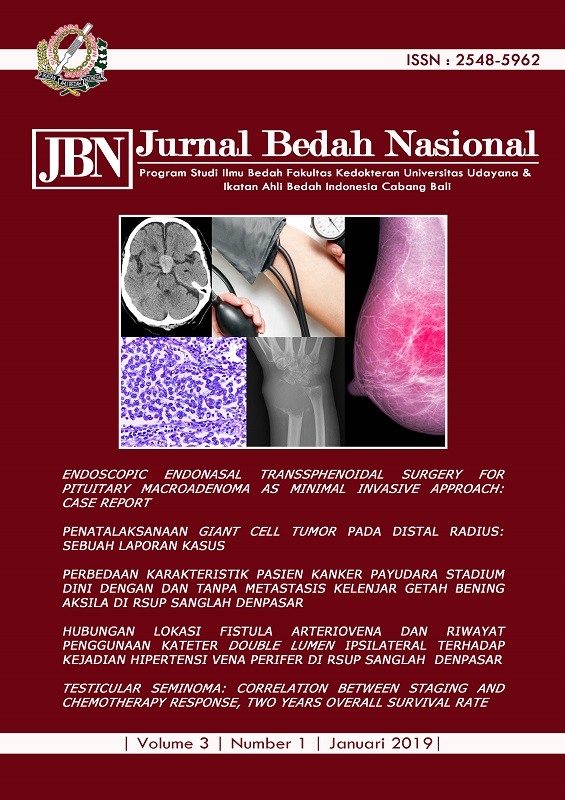Endoscopic Endonasal Transsphenoidal Surgery for Pituitary Macroadenoma as Minimal Invasive Approach: Case Report
Abstract
Background: pituitary tumor accounted for 15% of benign intracranial tumors. Clinical symptoms found in the form of visual disturbances, and hormonal manifestations, surgery is one of the main managements. Endoscopic endonasal transsphenoidal surgery (EETS) is a minimally invasive approach for this case. The advantages of EETS is better efficacy than traditional technique, and shorter hospital stays, less mean blood loss, and earlier return to daily activities. Case: we reported a rare example of a male patient aged 37 years old with the main clinical features were visual disturbances, sexual malfunction and bitemporal hemianopsia on physical examination. Magnetic resonance imaging (MRI) showed macroadenoma pituitary, the size 2.41 x 2.98 x 3.20 cm. We explained about minimally invasive surgery such as EETS and the patient was agreed to performed EETS. Conclusion: endoscopic endonasal transsphenoidal surgery is a minimally invasive technique for tumor pituitary cases and safe when compared to traditional medicine.
Downloads

This work is licensed under a Creative Commons Attribution 4.0 International License.
Program Studi Ilmu Bedah Fakultas Kedokteran Universitas Udayana. 
This work is licensed under a Creative Commons Attribution 4.0 International License.






